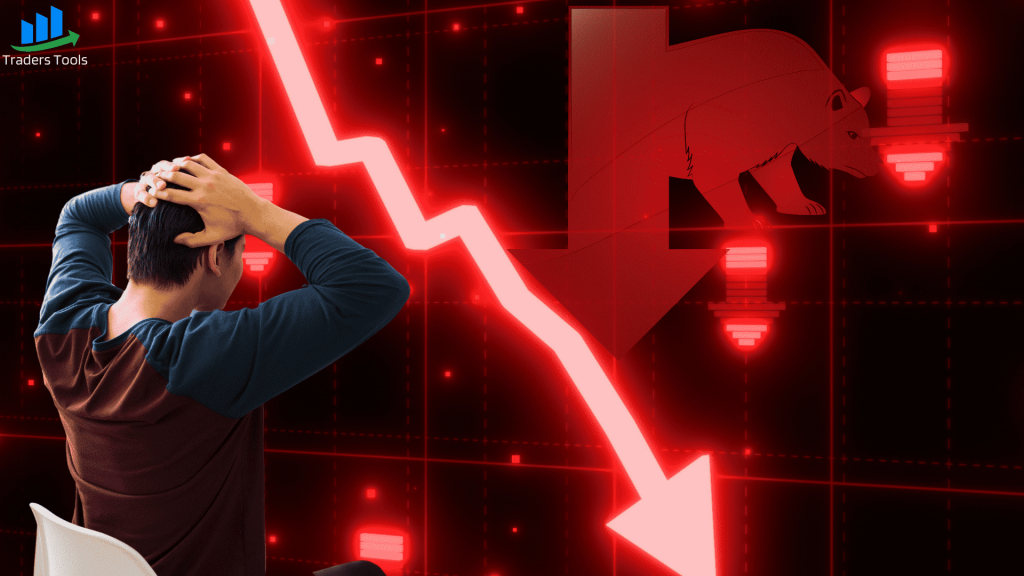
Indian stock market benchmarks- the Sensex and the Nifty 50- plunged over 3 per cent each on Monday, August 5, on an across-the-board selloff amid weak global cues. The benchmark BSE Sensex crashed 2,401.5 points, or 2.9 per cent, in early deals to hit an intraday low of 78,580.46.
The NSE Nifty 50, on the other hand, tumbled below the 24,000 – level to hit a low of 23,893.70. The index fell 700 points or nearly 3% per cent.
The total market capitalization of companies listed on the BSE fell to approximately ₹447 lakh crore, down from nearly ₹457 lakh crore in the previous session, resulting in a loss of nearly ₹10 lakh crore for investors within just an hour of trading.
The 5 key factors that have made the Nifty and Sensex bleeds:

1. Fear of US recession
Concerns are rising that the US economy might be entering a recession as the Sahm Recession Indicator significant slowdown in hiring in July, with only 114,000 jobs added compared to last year’s monthly average of 215,000. Additionally, the US unemployment rate has climbed to approximately 4.3 percent, the highest level since October 2021.
2. Iran-Israel war:
Geopolitical tensions also impacted domestic market sentiment following Israel’s announcement on Thursday that Mohammed Deif, the head of Hamas’ military wing, had been killed in an Israeli airstrike in Gaza last month. This statement came just a day after the death of the group’s political leader, Ismail Haniyeh, in Tehran, Iran.
3. Disappointing Q1 result:
Earnings growth for the quarter ending in June has been sluggish, with a year-on-year increase of approximately two percent. Among the 30 Nifty 50 companies that have reported their results to date, there has been a 0.7 percent year-on-year growth in earnings, but a 9.4 percent decline in net profits quarter-on-quarter.
4. Bank Of Japan policy change:
Japan’s Nikkei 225 fell as the Bank of Japan raised its benchmark interest rate pushing the value of Japanese yen higher against the US dollar. The BoJ voted in July 2024 to increase its short-term policy rate target to 0.25% from a range of 0% to 0.1%. This marked the first interest rate hike in the country since 2007, signaling a clear shift towards monetary policy normalization.
5. Over heated market:
Market participants noted that the Indian stock market was overextended, often reaching new record highs. It took only 24 sessions for the nifty index to surge 1,000 points, from 24,000 to 25,000. The market was due for a correction, which was triggered by weak global signals and escalating tensions in West Asia.
The rise in tax rates on long-term and short-term capital gains from equity investments, coupled with the increase in Securities Transaction Tax (STT) on futures and options in the Union Budget 2024, also made the significant corrections in the over heated market.
“From a technical perspective, the current market action points to a short-term top reversal pattern for the Nifty at the new high of 25,078. The unfilled gap down at the open could be interpreted as a bearish breakaway gap, often seen at significant reversal points. This suggests a negative outlook,” stated Nagaraj Shetti, Senior Technical Research Analyst at HDFC Securities.




